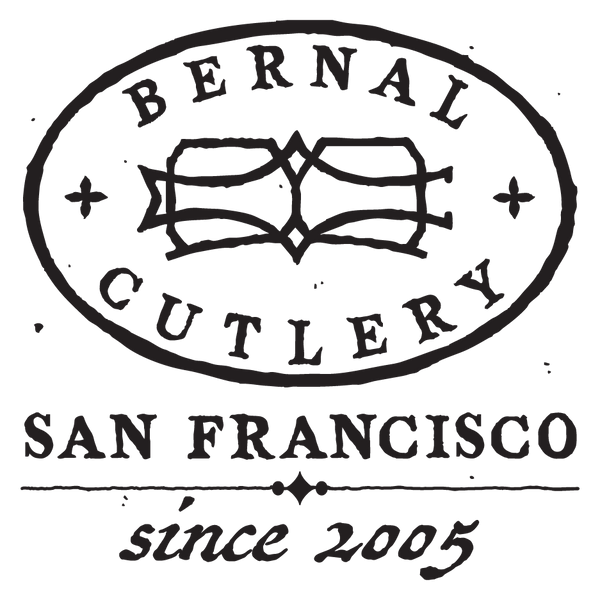-
Kitchen Knives
-
Bernal Cutlery House & Collaborations
- Greenfield Series
- Bernal Cutlery Black Label
- INVICTUS - K Sabatier | Butcher's Guide
- Nouvel Ideal - K Sabatier
- GS+ Ko Sabaki - Konosuke
- Small Chef - Rolin Knives
- Stainless Clad - Tosa Tadayoshi
- Knife Rolls - ILE
- Pizza Cutter - F+W | Prince
- Sakai Style - Blenheim Forge
- Sori Series - Sakai Kikumori
- Kurouchi - Nakagawa | Sakai Kikumori
- Shop by Use
- Shop by Shape
- Shop by Category
-
Shop by Maker
- Ashi Hamono
- Astral Works
- Au Nain
- Au Sabot
- AZ Knives
- Bernal Cutlery Manufactory
- Blenheim Forge
- Chazeau Honore
- Eichenlaub
- Florentine Kitchen Knives
- Friedr. Herder
- Gihei Knives
- Goyon-Chazaeu
- HADO
- Hatsukokoro
- Hitohira
- J Adams
- John Nowill & Sons
- K Sabatier
- Kaji Bei
- Kanehide
- Kenji Togashi
- Kogetsu
- Konosuke
- MAC Knife
- Masakane
- Morihei
- Mutsumi Hinoura
- Myojin Naohito
- Néron
- Naozumi
- Nigara Hamono
- Pallares
- Roland Lannier
- Rolin Knives
- Sakai Kikumori
- Satoshi Nakagawa
- Seki Kanetsugu
- Tagai Sanjo
- Tanabe Tatara
- Tosa Tadayoshi
- Tosa Tsukasa
- Tsukasa Hinoura
- Wakui
- Yoshikane
- Knife Storage
- Sayas & Guards
- Knife Care
- Trade In
- Bargain Bin
-
Bernal Cutlery House & Collaborations
- Knives & Tools
- Sharpening
-
Kitchen Tools
-
Shop by Brand
- Ambrogio Sanelli
- Andre Verdier
- Ateco
- Au Nain
- Chefs Press
- Due Buoi
- Dexter Russell
- F. Dick
- Geo Yukio Hattori
- Gestura
- Hardmill
- Hitohira
- Inside Line Equipment (ILE)
- Jones Cutting Boards
- Kagetsu Donabe
- KYOTOH Donabe
- Kuramoto
- Lancaster
- Lundy Way
- MAC Knife
- Made In
- Netherton Foundry
- Noda Horo
- Nordic Ware
- Pallares
- Peugeot
- Prince
- Silky
- SILPAT
- Shop by Use
- Cookware by Material
- Cookware by Type
- Prep Tools
- Cutting Boards
- Utensils
- House & Kitchen Scissors
- Softgoods
- Chef's Press
- Cleaning Supplies
-
Shop by Brand
- Tableware
- Vintage
- Pantry
- Books & Gifts
- Services & Info
or
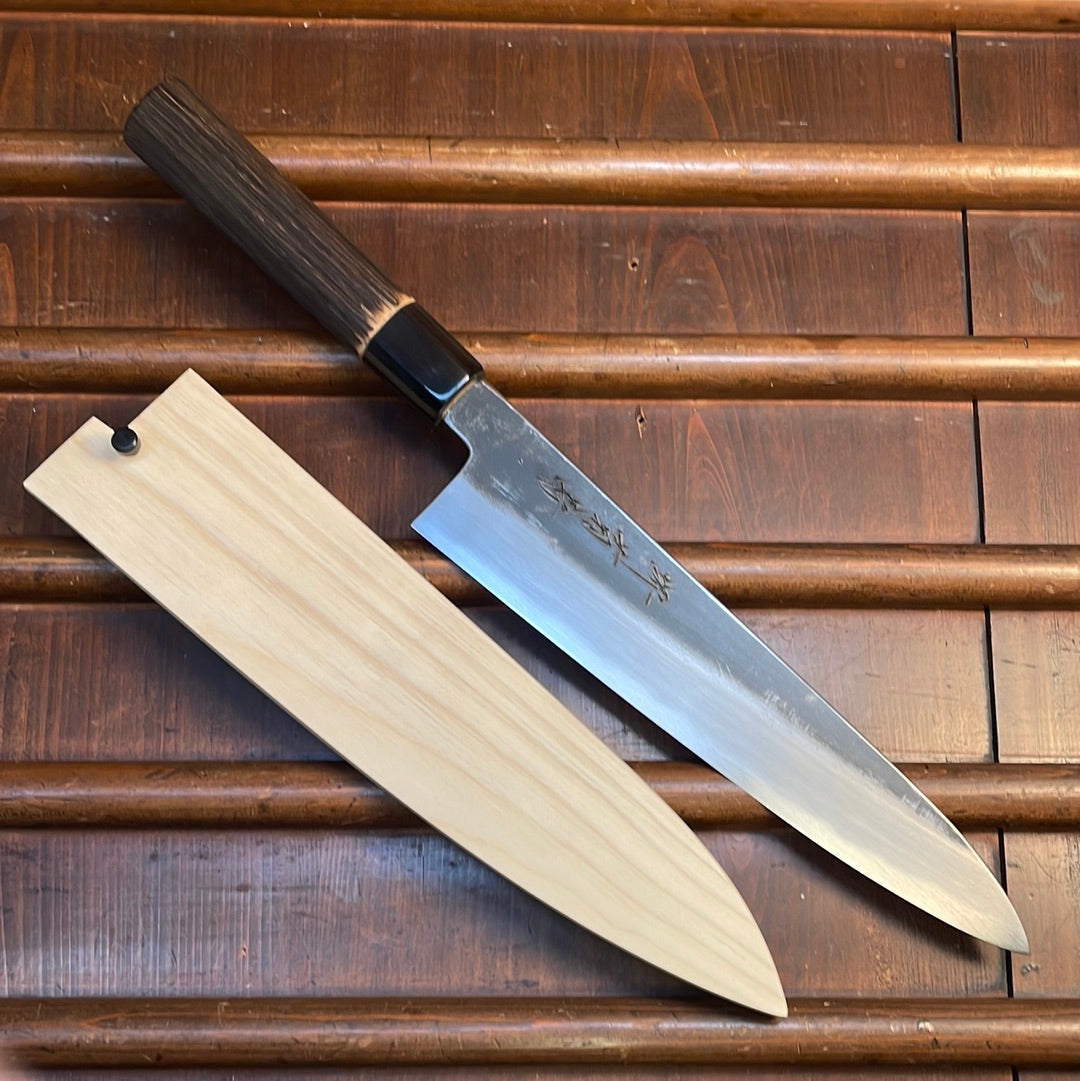
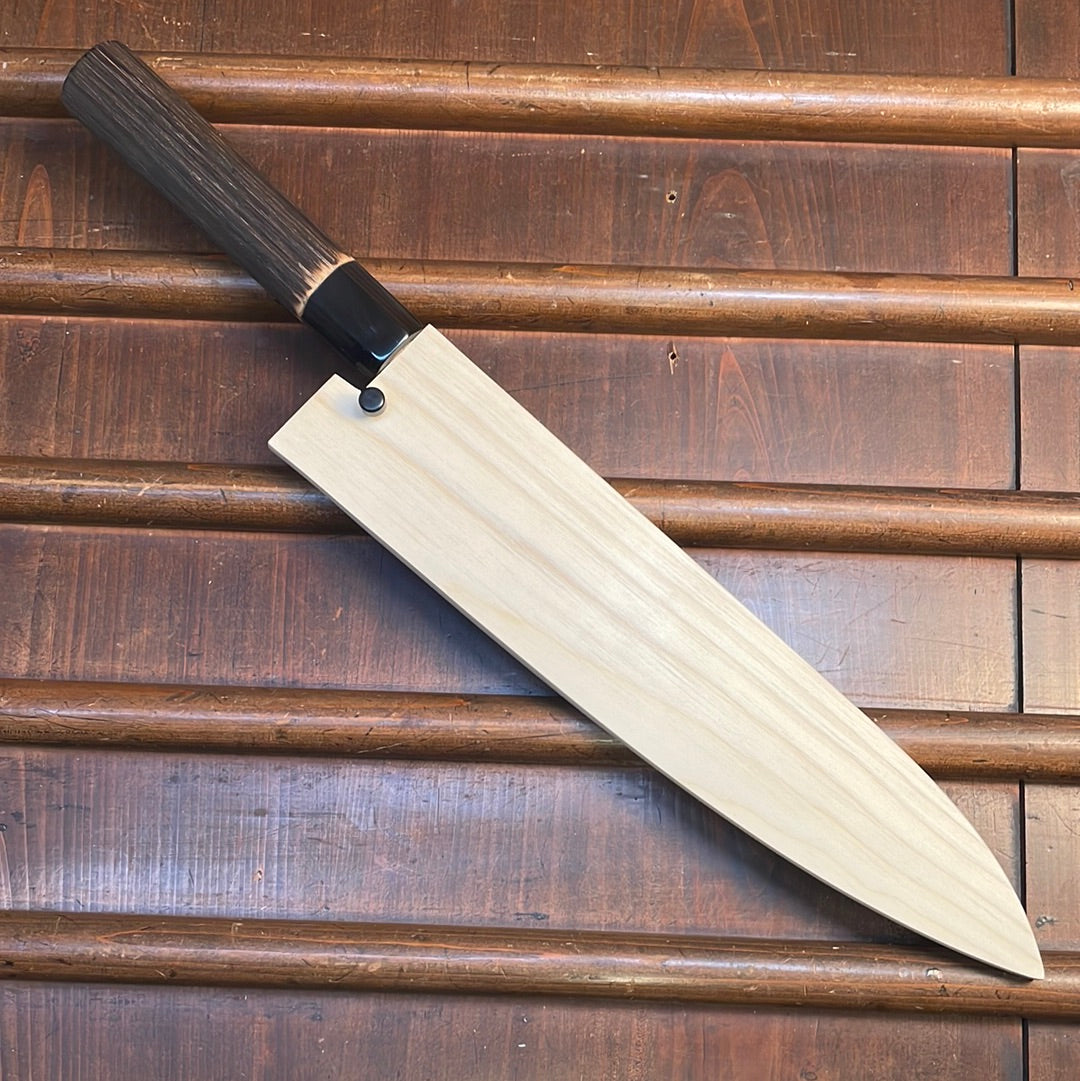

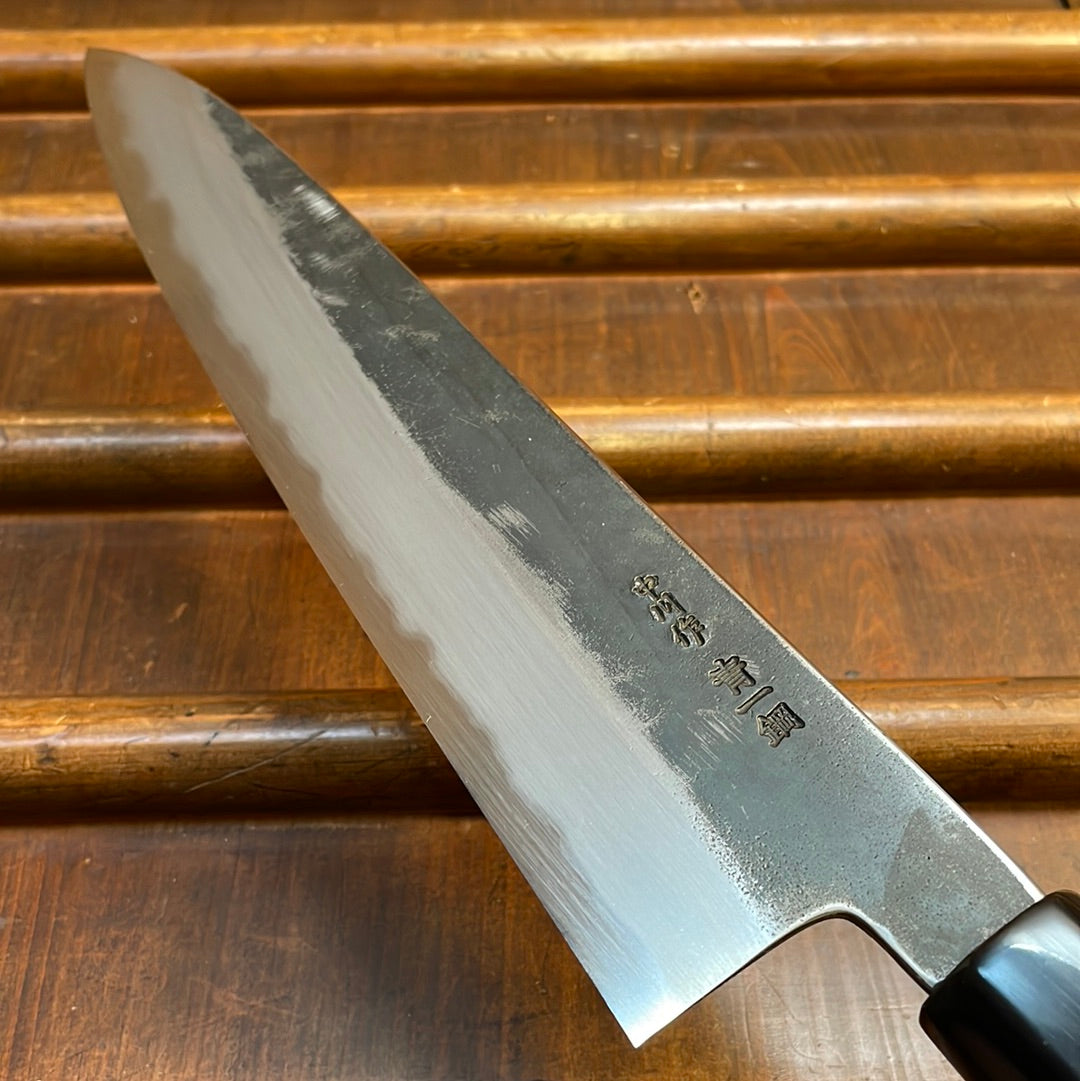
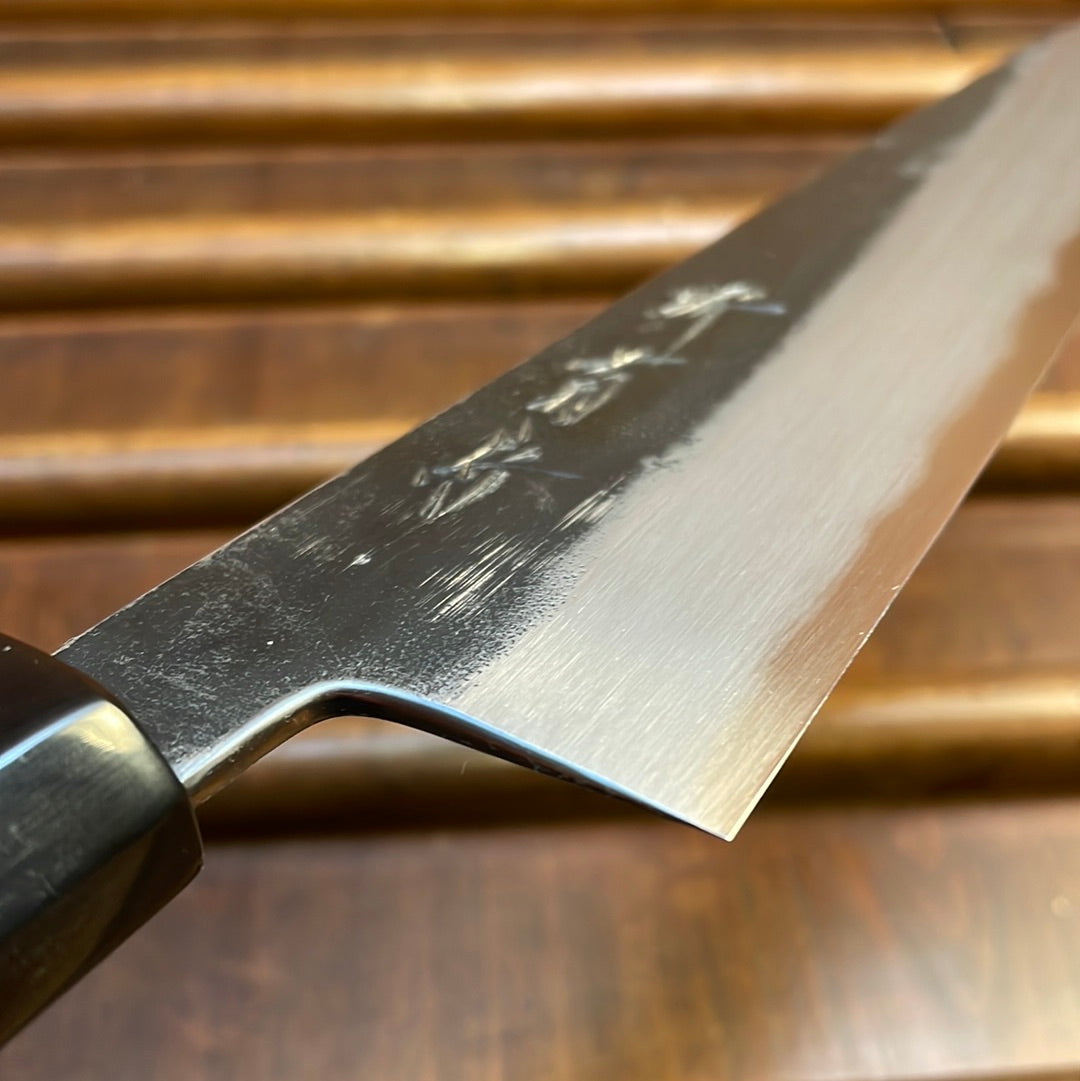

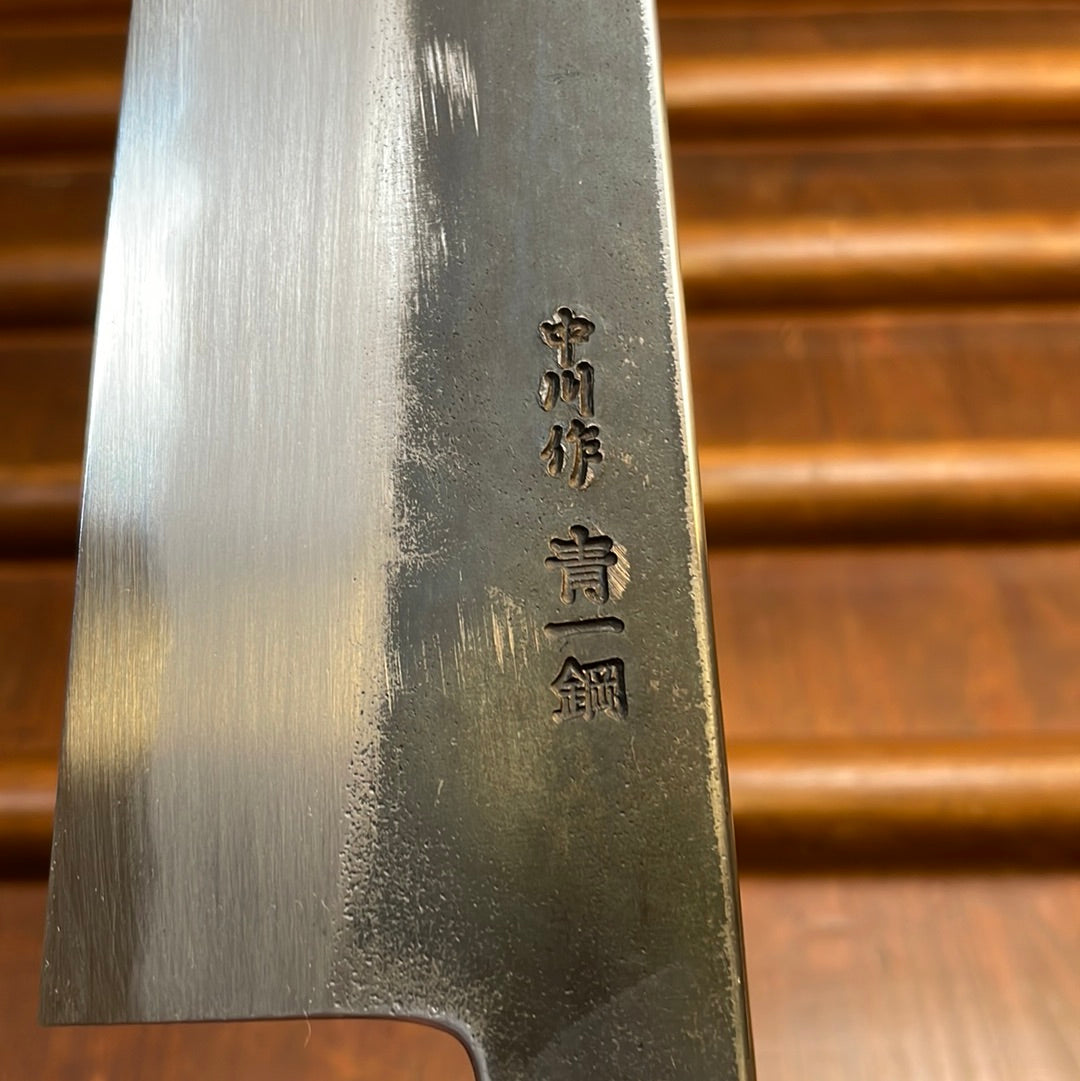
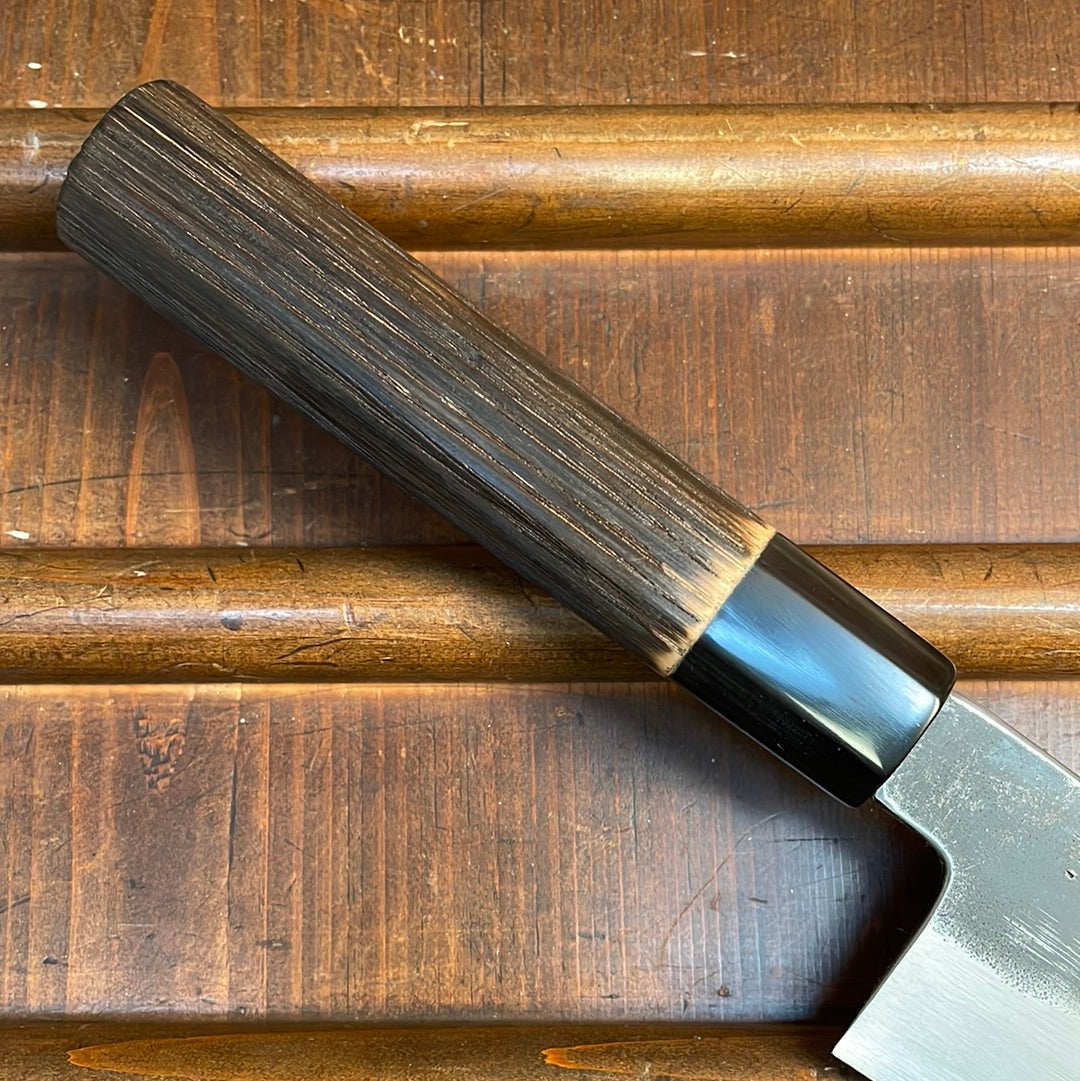
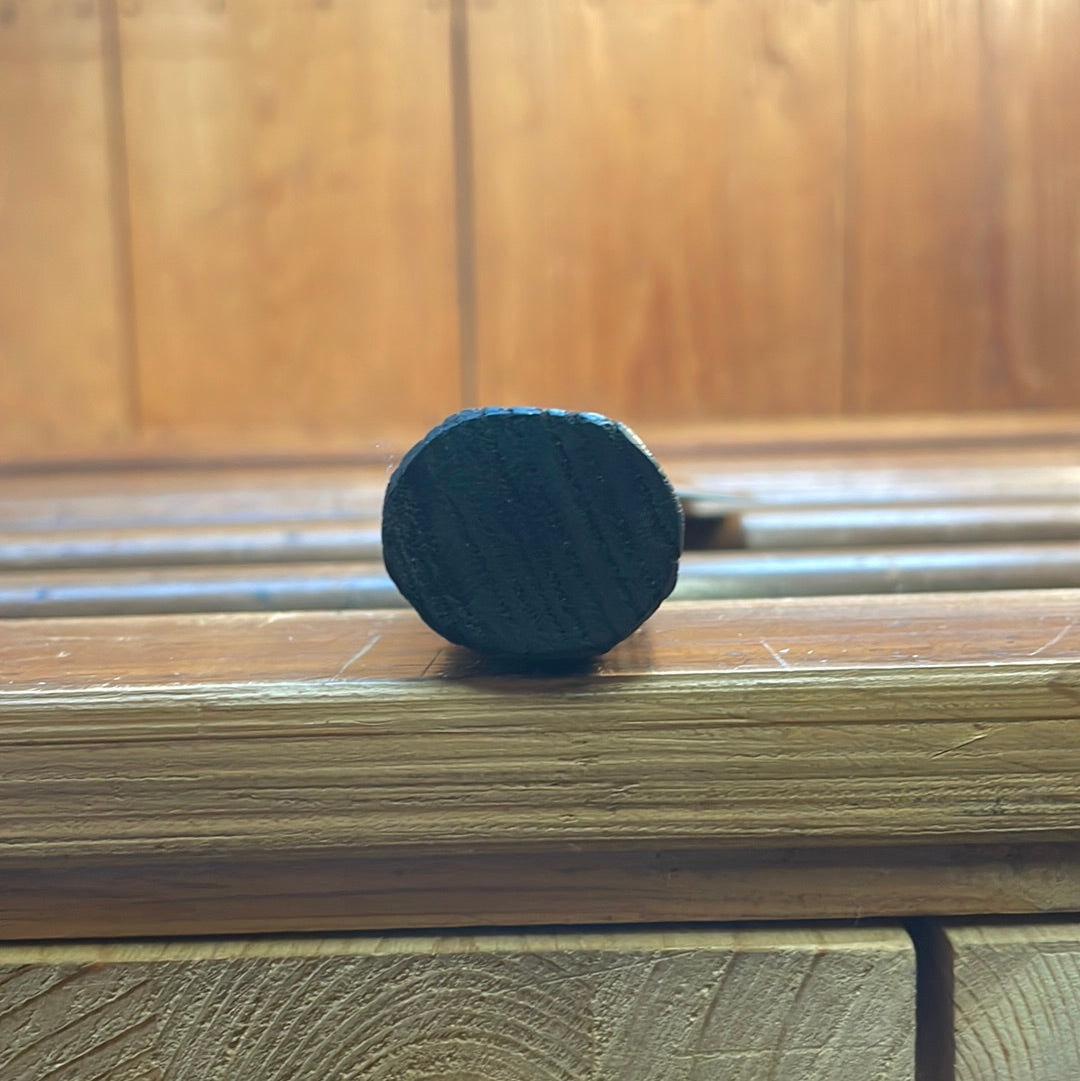
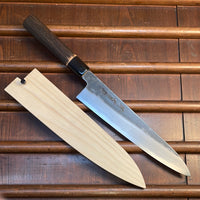
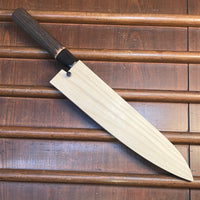
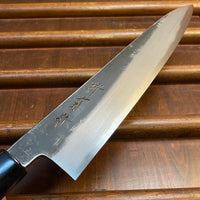
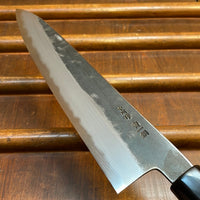
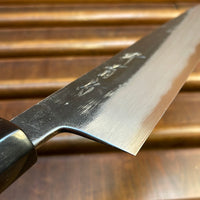
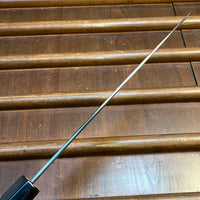
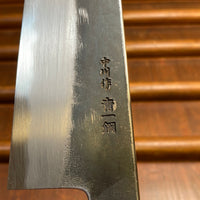
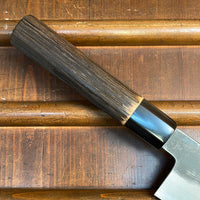
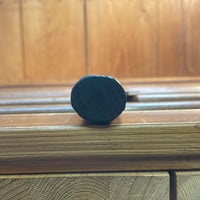
Sakai Kikumori Nakagawa x BC 240mm Gyuto Aogami 1 Kurouchi Burnt Chestnut with Saya
-
Regular Price
-
$779.68
-
Sale Price
-
$779.68
-
Regular Price
-
Sale
Sold Out
-
Unit Price
- /per
- Regular Price
- $779.68
- Sale Price
- $779.68
- Regular Price
- Unit Price
- /per
We are proud to introduce as the sole North American retailer, knives done as a collaboration between Sakai Kikumori and Nakagawa Hamono. Inspired by a conversation with Bernal Cutlery’s Lisa and Josh and Sakai Kikumori. Kawamura-san at Kikumori asked what we would like to see, and shirogami 1 and aogami 1 kurouchi gyutos from Nakagawa Hamono came to mind.
These knives represent a blend of the rustic and the refined. They have a dark forge-scale kurouchi finish and exceptionally thin grinds to support the superb forging. Nakagawa-san's smithing is characterized by thorough heat treatment with excellent heat control during forging. The result are knives that have remarkable edge formation and edge retention while remaining tough.
Aogami 1 is a low contaminate carbon steel with tungsten as a main alloy ingredient. Sometimes, Aogami 1 is overshadowed by its sibling, aogami super, which has a higher alloy content that includes vanadium for long edge life. Aogami 1 has better edge formation and typically works better at finer finishes than the busier aogami super. Nakagawa-san’s aogami 1 has a nice blend of edge life, toughness, and edge formation. Nakagawa-san’s aogami 1 has a bitey feeling even at finer finishes that can often leave aogami steels feeling sterile or slidey. Nakagawa’s aogami 1 also works very nicely with a variety of natural stones.
These have a natural (as opposed to chemically applied) kurouchi finish which will include some hammer marks and rougher cosmetic grinder marks. When cared for properly, the kurouchi will gradually fade and be replaced with a patina from use.
When new, the burnt chestnut handle may transfer to your hands.
Sakai Kikumori was started in 1926 and draws on Sakai's 600 year history as the major center of traditional Japanese cutlery manufacturing. They work with a large variety of Sakai's best smiths, sharpeners and small factories to offer a wide variety of knives ranging from traditional to modern.
Brand: Sakai Kikumori
Smith: Satoshi Nakagawa
Producing Area: Sakai, Japan
Shape: Gyuto
Size: 240mm
Steel Type: Carbon Steel
Steel: Iron-Clad Aogami 1
Handle: Burnt Chestnut Octagonal
Total Length: 380mm
Handle Length: 136mm
Handle to Tip Length: 243mm
Blade Height: 49mm
Edge Length: 228mm
Thickness: 3.89mm
Weight: ~200g (varies)
Hand Orientation: Ambidextrous
Saya: Included
HRC: 63-64
*Measurements are taken from random sample
Actual measurements of knife received may vary.
This is a carbon steel knife. Carbon steel is expected to develop a dark patina with use. It needs to be hand washed and dried immediately after use. Do not air dry. Do not put it in the dishwasher. Long exposure to moisture and debris will result in rust. Any rust development should be removed with a light abrasive.
Twisting, scraping, and heavy use, as well as use on hard and very dense objects can lead to edge damage. Use on a quality wooden cutting board will help the knife stay sharper for longer. Use on hard surfaces like plates and bamboo will reduce the edge life and can result in edge damage. Special attention needs to be taken to prevent edge damage. Scraping, twisting and forceful as well as using on hard or very dense foods can result in chipping.
We recommend hand sharpening on whetstones. We have found that most Japanese knives perform best at a finer finish starting around 4000. Avoid pull through sharpeners and non-water cooled mechanized sharpening. Ceramic honing rods are preferred.
Recently Viewed
About Bernal Cutlery
We are a full-service cutlery shop offering sharpening services, Japanese and Western culinary knives, vintage knives, outdoor, pocket and craft knives, cooking tools and accessories. We also offer knife skills and sharpening classes, and more.
We are proud to serve kitchen professionals, knife enthusiasts and home cooks alike. Located in the Mission District of San Francisco, California.
766 Valencia Street, SF, CA 94110
1 Ferry Building, Ste. 26, SF, CA 94110
